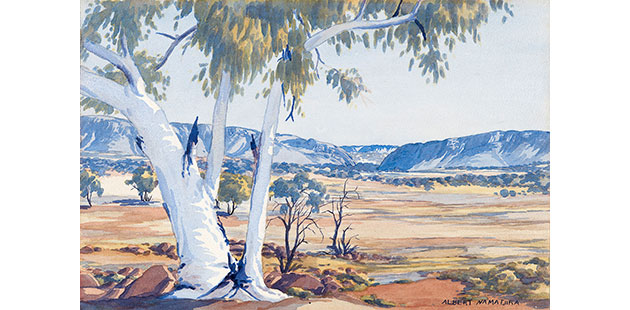 An exclusive exhibition exploring Australia’s unique weather systems in a presentation that recognises Indigenous cultural knowledge as central to understanding our natural environment, the National Gallery of Victoria will present Big Weather at The Ian Potter Centre: NGV Australia from 23 October 2020.
An exclusive exhibition exploring Australia’s unique weather systems in a presentation that recognises Indigenous cultural knowledge as central to understanding our natural environment, the National Gallery of Victoria will present Big Weather at The Ian Potter Centre: NGV Australia from 23 October 2020.
Big Weather will feature over 75 artists across media, encompassing painting, photography, film, weaving and sculpture. Works by artists from diverse Indigenous communities present unique interpretations of Ancestral spirit beings who summon the rain, hail, and seasonal storms, that feed into our rivers, revive the landscape and nourish wildlife.
“Big Weather encourages visitors to consider the importance of Indigenous knowledge of weather systems to understand the dynamic nature of the Australian landscape,” said Tony Ellwood AM, Director National Gallery of Victoria.
“This exhibition presents new commissions and NGV Collection works by both historical and contemporary artists, including Albert Namatjira, Emily Kam Kngwarray, Julie Gough, Laurie Nona, Michael Riley, and Nonggirrnga Marawili.”
An exhibition highlight will be a pair of newly commissioned possum skin cloaks created by Yorta Yorta artist Treahna Hamm displaying designs reflecting cultural fire stories and contemporary climate change research.
A new acquisition of woven shield designs by emerging Yorta Yorta/Taungurung artist and weaver Donna Blackall references different aspects of the natural environment across the five language groups of the Kulin Nation, the Country where the National Gallery of Victoria stands.
At the start of the exhibition, visitors will be greeted by a sculpture of the powerful ancestral spirit Bolngu, the Thunderman, 2010 by Johnny Yirryirrngu of Elcho Island, North East Arnhem Land, placed alongside John Mawurndjul’s 1992 painting Namarrkon ngal-daluk, the female lightning spirit, portraying a formidable spirit who strikes lightning down to earth announcing the arrival of the wet season to Kuninjku people of Western Arnhem Land.
Climate change is addressed in works exploring extreme weather including flooding, bushfires, cyclones, and storms and how these events are changing our landscape. Knowledge of these weather systems and ancestral stories about Country is shared through oral traditions and customary ceremonies passed down across generations.
The significance of transferring cultural knowledge over generations is illustrated by paintings by Western Arrernte watercolourists including legendary artist Albert Namatjira presented alongside contemporary artists who continue the watercolour tradition including Noreen Hudson and Seth Namatjira, grandson of Albert Namatjira. This display illustrates changes across the Central Australian landscape reflecting the artists’ understanding of and connection to the land now and over time.
The integral role of animals in the overall balance and wellbeing of the environment is portrayed in representational works in diverse media, including woven fish traps from across Australia which reflect how animals are universally respected not only as practical sources of food but for their spiritual existence and as indicators of changing weather patterns.
Michael Riley’s Untitled from the iconic photographic series cloud, 2000 depicting a levitating cow, speaks directly to Australia’s history of settlement and the sadness and confusion that introduced animal species caused Indigenous communities, interrupting their ancient relationship with their Country.
Big Weather
The Ian Potter Centre: NGV Australia, Federation Square, Melbourne
Exhibition: opening 23 October 2020
Free entry
For more information, visit: www.ngv.melbourne for details.
Image: Albert Namatjira, Arrernte 1902-1959, MacDonnell Ranges at Heavitree Gap, early 1950s watercolour 34.5 × 52.0 cm National Gallery of Victoria, Melbourne. Presented by Esso Australia Pty Ltd, 2018 © Namatjira Legacy Trust/Licensed by Copyright Agency, Australia
